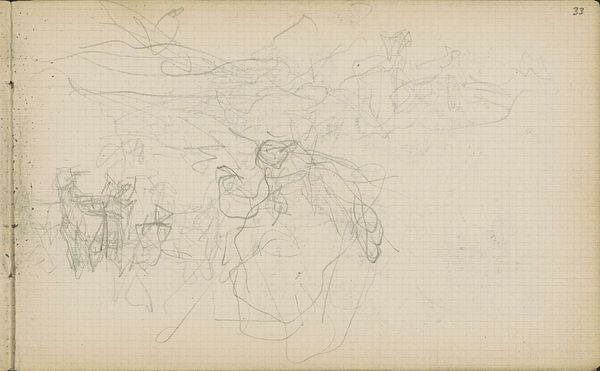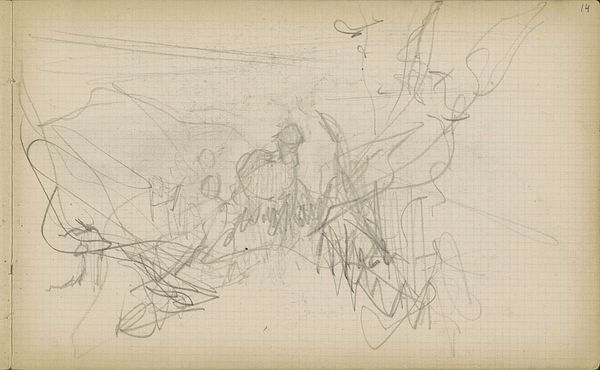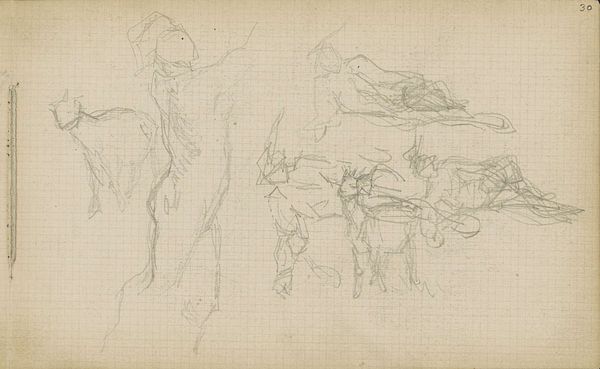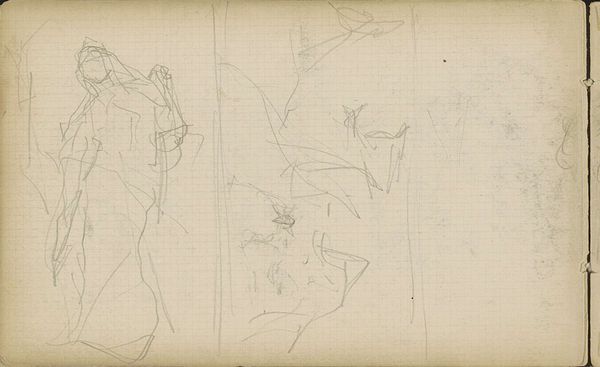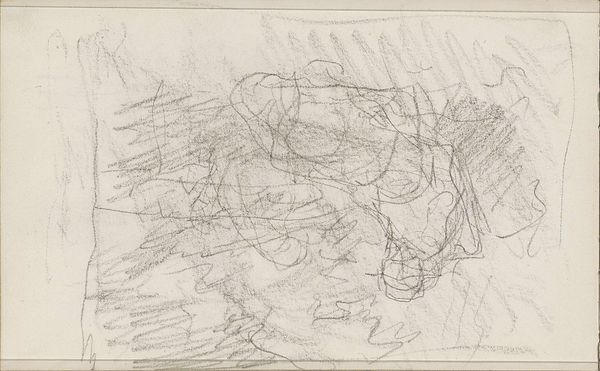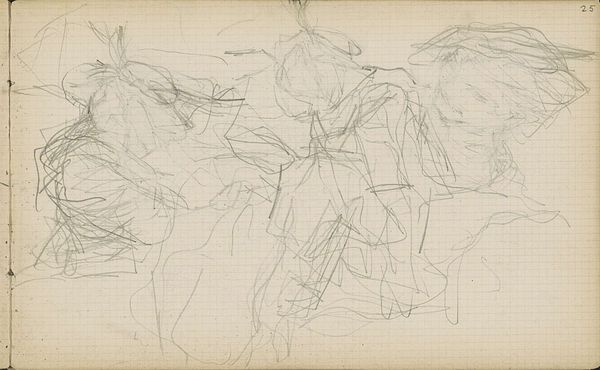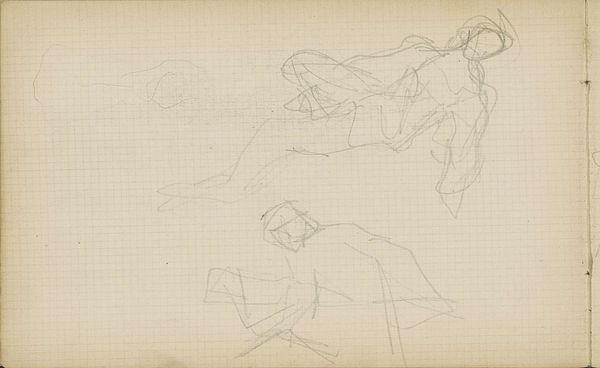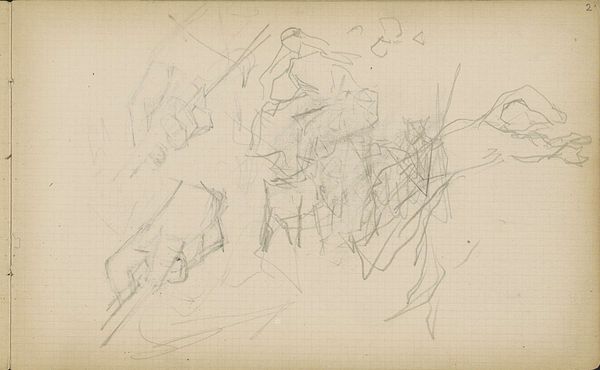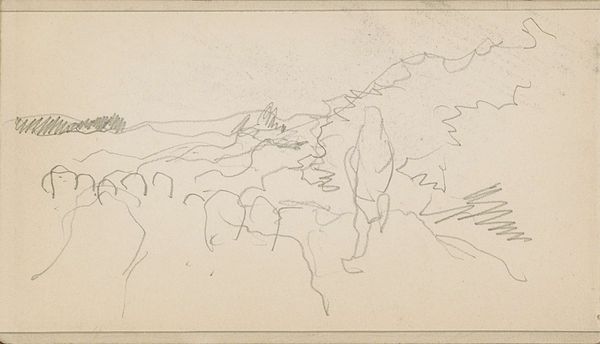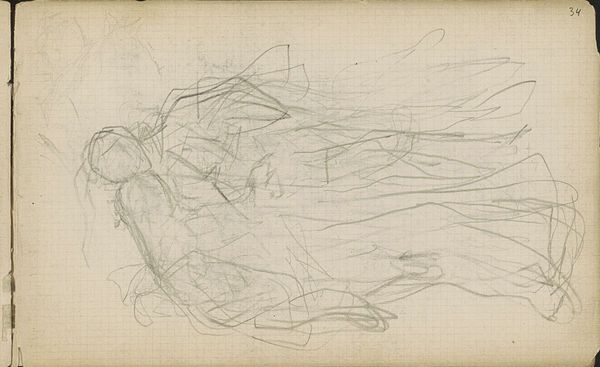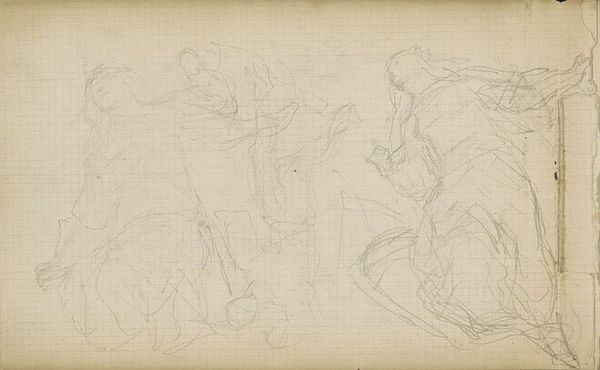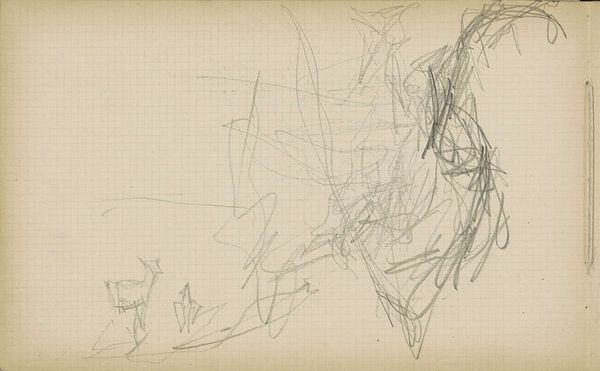
drawing, paper, pencil
#
drawing
#
amateur sketch
#
light pencil work
#
pencil sketch
#
incomplete sketchy
#
figuration
#
paper
#
personal sketchbook
#
ink drawing experimentation
#
pen-ink sketch
#
pencil
#
sketchbook drawing
#
sketchbook art
#
realism
#
initial sketch
Copyright: Rijks Museum: Open Domain
Editor: Here we have "Geiten," or "Goats," a pencil drawing by Matthijs Maris, made sometime between 1849 and 1917. It feels like a very quick sketch, almost ephemeral. What strikes you most about this piece? Curator: The unfinished quality is precisely what captivates me. It invites us to consider not just the *what* – the goats – but the *how* and *why* of representation. Maris, working within a period grappling with rapid industrialization, seems to be searching for a way to capture the essence of these animals without resorting to a polished, idealized image. What do you make of that grid underneath the drawing? Editor: That's interesting, I hadn’t considered that! The grid showing through makes it seem even more like a study or experiment. I suppose it does take away from the finished product feel. Curator: Exactly. And that brings us to questions of class and labor. Consider the art world of the late 19th century, largely dominated by the bourgeoisie. A piece like this challenges conventional notions of what is considered "art." Is this simply a preparatory sketch, or does its raw, almost vulnerable quality offer a critique of the polished, consumer-driven art of the Salon? Maris, by leaving the underdrawing exposed, disrupts that. What statement might he be trying to make by including it, instead of hiding it? Editor: Perhaps by showing the raw process, he's making art more accessible, less about perfection and more about…the search? Almost democratizing it? Curator: Precisely! By foregrounding the artistic process, Maris potentially democratizes artmaking. We start to understand art as a form of labor, of inquiry, rather than solely as a commodity for the wealthy elite. Editor: I see. I hadn't really considered the socio-political implications of a sketch. Now I see a very different message hidden there under the pencil lines. Thanks! Curator: My pleasure. It is a constant invitation to question established norms and power dynamics embedded within art history.
Comments
No comments
Be the first to comment and join the conversation on the ultimate creative platform.
